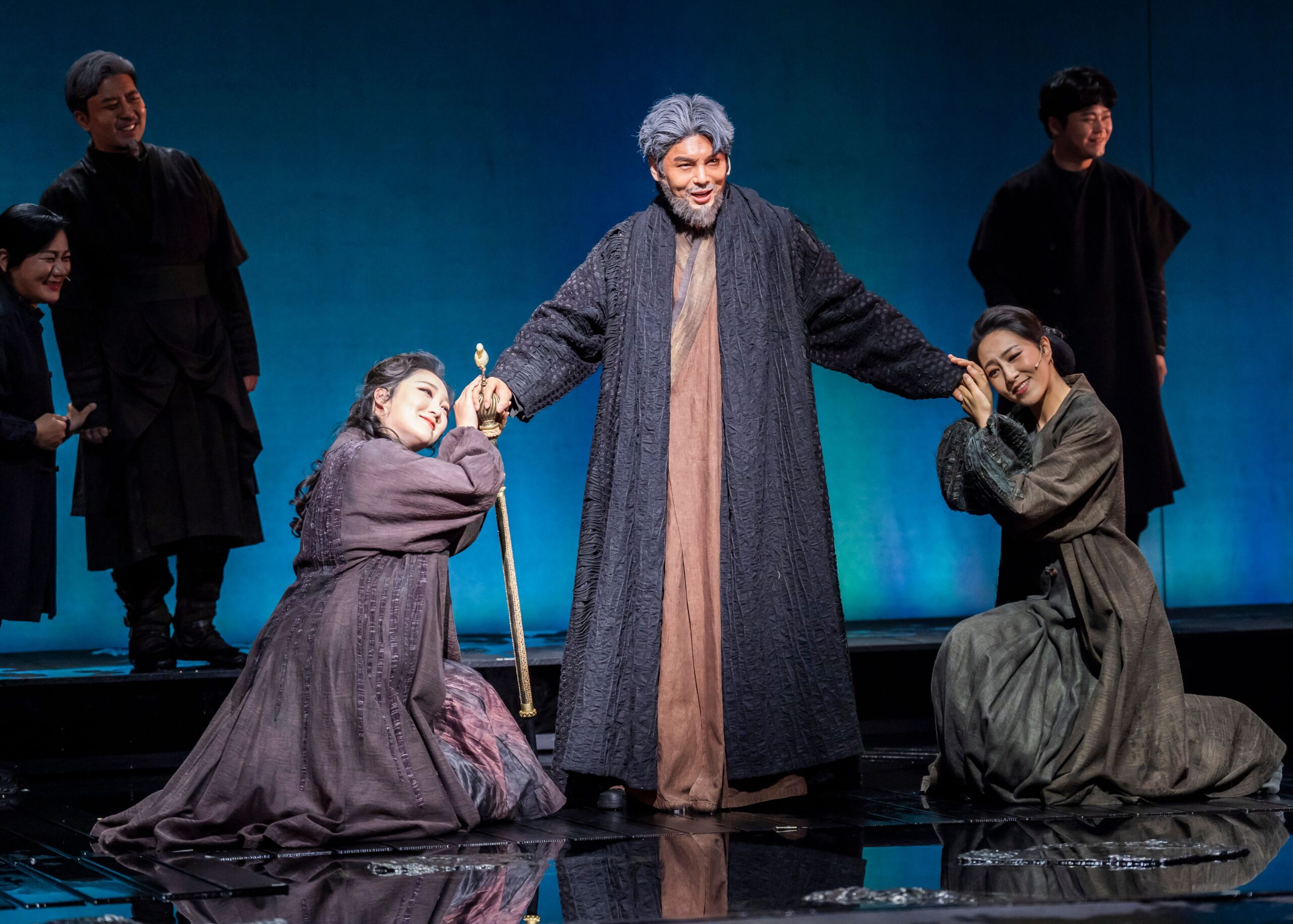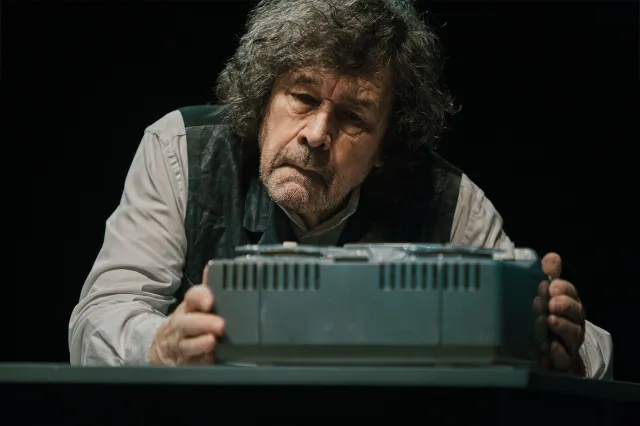National Changgeuk Company of Korea
Barbican Centre
Although the traditional Korean art form of Changgeuk, Shakespeare’s King Lear and the Barbican all seem rather randomly thrown together, it’s a delicious concoction that has been brewing for longer than you might have expected. What a way to kick of the 11th year of the K-Music Festival!
Now a little (and skin deep) history lesson, pulled from last night’s digital program and the internet, as I am neither a Korean theatre expert nor have ever visited that enticing land (sadly). Pansori is an ancient traditional folk performance, between a performer singing and moving in a stylised fashion and a buk drum played by a gosu. At the end of Korea’s self-isolationist period from the 17th century to the turn of the 20th, the influx of other forms of entertainment, including Western operatic and theatre style led to the creation of Changgeuk. After a rocky and not always flourishing ascendence the genre is now starting to be appreciated not just within Korea but internationally. Thanks to one of the National Theater of Korea’s resident companies, the National Changgeuk Company of Korea. Starting in 1962 (only 3 years before the Barbican construction was started) the company simultaneously protects the limited Pansori texts handed down from generation to generation and sparking international interest in their new creations.
But enough exposition. Trotting along to the Barbican I was prickled with piqued interest, knowing very little about Korean opera and only watching Lear once about 5 years ago. Was I ready for twenty tons of water surging around on stage? Was I prepared for a piece at a level of such intensity I felt like I was experiencing g force? Was I ready for moments of such beauty, or a reworking so perfect it felt eternal? I think you can guess the answer.
Lee Tae-sup’s masterpiece is more sculpture than set. The aforementioned water, knee deep at points, sloshing and spraying over wooden decking, staining and weighing down Jung Min-sun’s quietly glimmering fusion costumes. Party medieval European court-wear, partly ancient Korean imperial style, the overall vision of churned mud and winter, but with flashes of gilding, taffeta, and jewels poking out from Lear and his three daughters’ clothes. Visually it is a feast, when the cold snows of exile begins for our king a sumptuous stranded white shape hangs over the stage, like a howling wind, yet static. Ma Sun-young’s lighting makes sure every moment is focused, and perfectly visible for all, crisp and clever beams bouncing off the swirling pools.
The discussion of family, age, responsibility and honour feels at home in ancient Korea as it would have done in 16th and 21st century England. Yi So Yeon as Goneril, and Wang Yun-jeong as Regan dominate the first act, as Lear’s spiteful, power-hungry daughters. First flattering and then snapping and snarling at their ageing father as they strip him of his power. Kim Su-in as Edmund also astounds as a truly Machiavellian character. An illegitimate son, desperate to succeed at the cost of everyone around him. This triangle of evil is stepped up when Edmund begins to play Regan and Goneril against each other in a wonderful mire of evil doings.
Musically Han Seung-seok Pansori composing, blending with Western streams from Jung Jae-il crafts an utterly unique creature. As this was my first time listening to/watching Pansori/Changgeuk I was struck by its higher harmonies and register, as well as the actor’s extreme characterisation. Unafraid to sound broken or hoarse, they finish notes with screams and moans, belting out so clearly and then descending into wails of emotion. This is so perfect for a play that ends with multiple deaths, suicides, blindings and buckets of betrayal.
Pai Sam-Shik has done well in keeping the poetry of Shakespeare but a particular issue causes plot-based confusion. Although the script, poetic and poignant is legible, there is only one subtitle screen above the proscenium, centre stage. This means that constant eye flicking and some neck pain are needed to catch the torrent of words from every character. Of course, this is my fault for not brushing up on my Korean before, but adding screens stage left and right would make improve things, and mean that certain plot lines aren’t so lost in confusion.
Lastly, although Kim Jun-su is an eyewateringly tragic lear, shuffling around hunched over the much-lauded performer is 33, a little young even with a rather stiff looking beard and powdered hair. It’s a shame that an older performer couldn’t been given the spotlight.
Nevertheless, these are small fry. Jung Young-doo’s direction has brought worlds, and ages together in an experience I don’t think I will ever witness the likes of again. Stormy, drenched in polluted water and blood. The most complex of the play’s themes are not only explored but musicalised, not only musicalised but translated into Korean, and shifted through not one but two linked cultural frameworks. These are the points where I am left misty eyed at the end of a production, deeply impressed by the melding power of a darn good piece of theatre!
Grab yourself more of this amazing festival, Click Here!



